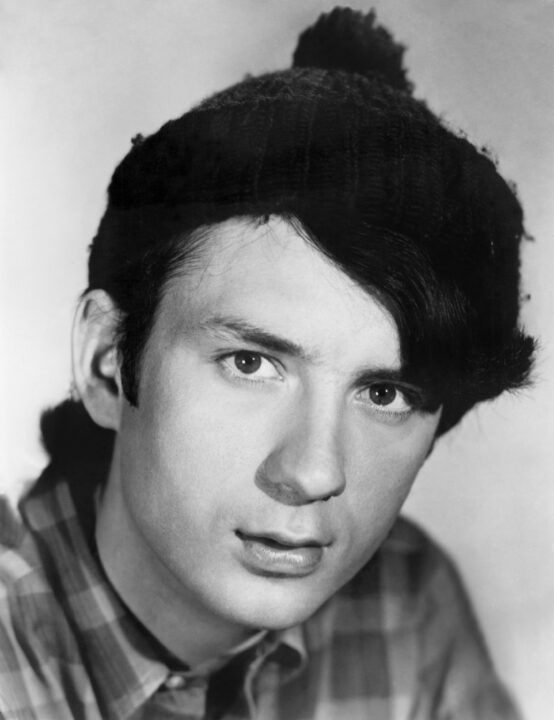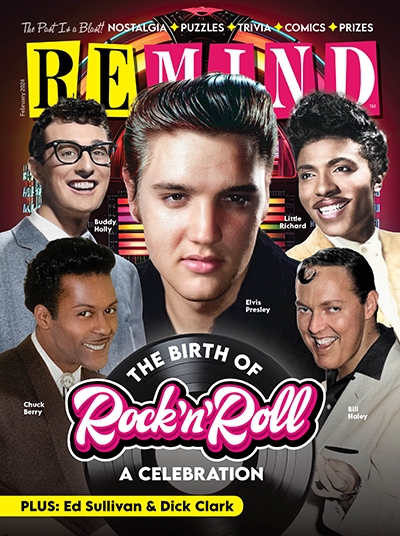This Monkee Helped Invent MTV

After rocking their way across the small screen in the mid-to-late ’60s, the Monkees went their separate ways in 1970. Though each band member then launched a solo career, only one of them helped not only pioneer the idea of the modern music video, but also directly influenced the creation of MTV.
After the Monkees initial breakup, Michael Nesmith became interested in film and video. He had deep roots in the music world from his pre-Monkees life — he had been a folk singer, and wrote “Different Drum,” which became a hit for Linda Ronstadt’s band the Stone Poneys — and by the late ’70s, he thought the future of pop music might be on video.

Everett Collection
In 1977, to promote his new single “Rio,” Nesmith was asked to give his record company a clip of him singing the song. Instead, Nesmith and director William Dear delivered a video filled with the kind of disconnected, surreal images and multiple abrupt costumes and set changes that are now considered music video clichés. But at the time, there had never been anything like it, leading many to dub it the first “true” music video. As Nesmith told the authors of the 2011 book I Want My MTV, “That wasn’t what Island Records had in mind, at all.” But after the video was a slight hit in Europe, Nesmith became excited to explore more in this direction.
And then, Nesmith recalled, “I was driving in my car, it was an early evening, and I thought, What you could do is, you could put together a television show or a television channel that played videos all the time.”
Recruiting TV legend Norman Lear as producer, Nesmith pitched a new idea: a music video TV show called PopClips. After creating a pilot in 1979 — which featured a pre-fame Howie Mandel — Nesmith presented the show to TV networks. Most were not interested; it was a hard break from the classic musical TV show format, which included live performances from bands. But TV executive John Lack was interested in taking a chance on the show, and began airing it on Nickelodeon in 1980.
The show, which used the motto “Where the music is in motion,” featured proto-Veejays who hyped the upcoming videos in the way Martha Quinn and co. would a short time later, as well as the kind of short comedic vignettes that would soon become MTV staples. A veejay concludes one broadcast by saying “We believe that pop clips, the video record, is the thing of tomorrow” — and he had no way of knowing how right he was.
PopClips was a hit, and John Lack wanted to expand it, but also make it more focused on top 40 and mainstream acts, instead of the slightly more out-there fare the original show included. Nesmith took this as his cue to leave. According to I Want My MTV, he said, “My plan had always been to build it and sell it. They paid me a nice number. That was my exit.”
Lack then approached an executive at the Movie Channel, and suggested they develop a similar single-focus channel, but for music videos. When they got a green light to put it into production, Lack went back to Nesmith and asked him to be a creative consultant for the new Music Video Network. But Nesmith passed — he didn’t like the people involved, and what they wanted to do seemed too corporate and square.
Two things happened in 1981 that changed the fate of music videos forever: Nesmith released an hour-long video, Elephant Parts, which mixed comedy sketches with five videos for his songs, winning the first ever Grammy for a music video; and on August 1, MTV hit TVs for the first time.
Despite the ultimate success of the channel (and the vast amount of money he left on the table by not being involved), Nesmith never became bitter, and rebuffed attempts to call him the “inventor” of MTV, explaining instead that the concept was “one of those ideas that nobody really thinks up. It’s like justice. Or kindness. Nobody thinks that up.”

Birth of Rock 'n' Roll
February 2024
"Long live rock," we like to say, but how did it come to life? Revisit the memorable moments, music and movies that made teens go beat crazy back in the 1950s.
Buy This Issue
